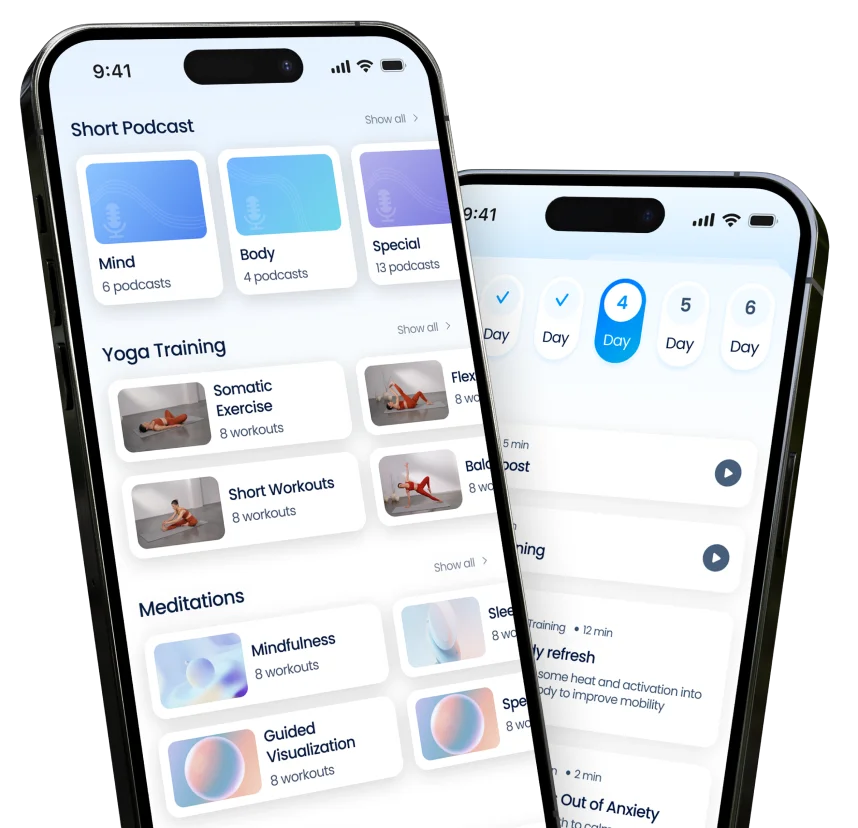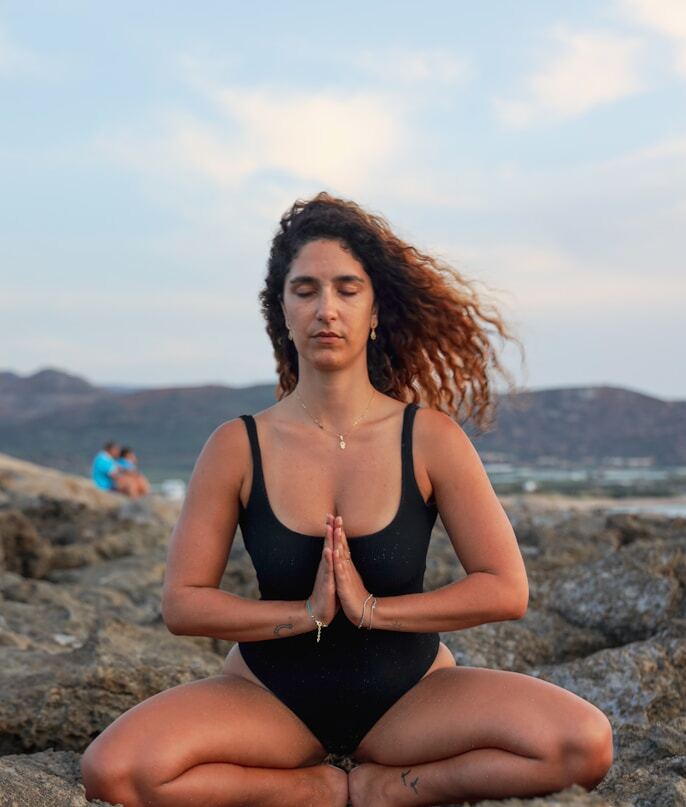
The Flow of Meditation
Metta meditation starts with gentle breathing and relaxation to prepare your body and mind for deep compassion practice. If you notice your mind wandering, don’t be harsh on yourself and gently shift attention back without judgment. Remember that every phase of the metta practice can take as much time as you need. So, if your body feels like it needs more time for mindful breathing or body scanning, pause the recording and stay present in the moment for however long you need.
When you’re ready, the practice guides you further to positive affirmations. First, you’ll be asked to direct loving-kindness words towards yourself, then to your loved ones, and, if you’re ready, to those you don’t like.
This natural and slow flow will help you feel closer to everything and everyone on Earth, leaving disconnection and isolation in the past. By sending loving kindness into the outside world and cultivating it within, you’re psychologically tuning yourself to the same vibrations and attracting this energy into life.
How It Helps Your Mental State

Attract beautiful emotions
We tend to notice things, situations, and people that are already in our minds. So, if you believe that people hate you, you most probably will notice the occasions supporting this mindset. But once you start cultivating loving-kindness, you’ll notice events resonating with these beautiful feelings. At first, it may seem difficult to sincerely feel these emotions, but soon you’ll find yourself surrounded by joy, love, and happiness because you grew it from within!

Cultivate positive self-talk
We often talk to ourselves as a constantly reprimanding parent or even an enemy. The loving-kindness practice helps you build up self-compassion from scratch and teaches your brain to only talk to yourself kindly. Remember that you’re the one communicating with yourself 24/7, so why not create a safe and comfortable environment within? By consciously practicing kindness in your inner dialogue, you slowly rewire your mind to become your own caring parent and support yourself in the hardest times with love and patience.
Explore All Meditations for a Calmer Life

This technique involves systematically focusing your attention on different parts of your body, usually from head to toe. It helps cultivate awareness of physical sensations, reduce stress, promote relaxation by helping you become more attuned to how your body feels, and more easily detect physical tension and discomfort.

Meditating while doing everyday tasks can help you find peace and balance, not in the sterile, trigger-free environment but amidst the hustle of life.
Walking meditation involves paying close attention to the movement of your feet, the sensation of the ground beneath you, and your breath while being fully aware of your surroundings. It’s a way to practice mindfulness while moving, which can be particularly effective for those who have already mastered sitting meditation.

It involves the repetition of a mantra (a word, phrase, or sound) to focus the mind and enter a meditative state. The mantra can be spoken, chanted, or silently repeated. This practice helps in reducing distractions and concentrating on a specific aspect of life you’d like to develop. For example, on some days you may create the mantra “I’m open to every experience life offers me,” and on others, “I’m kind and compassionate.”
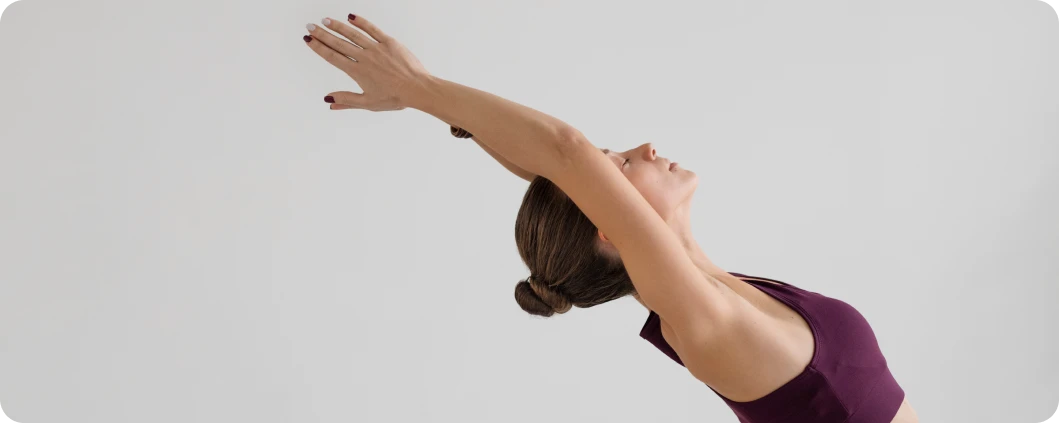
Combining elements of mindfulness with physical activity, this practice involves engaging in slow, deliberate movements while paying attention to bodily sensations and breath. It can include practices like yoga or Tai Chi, strengthening both physical and mental well-being via integrating awareness with motion.

This practice focuses on recognizing and appreciating the positive aspects of life. It typically involves reflecting on things, people, or experiences that you’re thankful for, and they shouldn’t be necessarily positive! By cultivating a sense of gratitude, you can shift your mindset towards a brighter and more comprehensive perspective on life events, even if they were not as pleasant at first.

It focuses on connecting with the present moment and stabilizing your energy when you feel overwhelmed. Techniques may include visualizing roots growing from your feet into the earth, deep breathing, or focusing on all physical sensations such as smell, taste, and touch. This meditation is often used to reduce anxiety and foster an overall sense of stability and safety to restore emotional balance.

This practice helps you develop compassion for yourself and others by imagining and wishing for relief from their suffering. It can cultivate your empathy as you encourage a caring mindset towards everyone. It’s a great way to improve your relationships and overcome feelings of being disliked or unlovable.

Use the power of your mind to create peaceful scenes, like a tranquil beach or a quiet forest. By visualizing these calming scenarios, this practice promotes relaxation and helps counter negative thoughts. It’s especially helpful for those who have trouble sleeping, can’t unwind easily, or feel overwhelmed by stress.

It involves practicing mindfulness in a natural setting, focusing on the sights, sounds and smells around you. It’s about immersing yourself in nature to foster a deep sense of peace, presence, and interconnectedness with the natural world. You don’t need to be in nature yourself, but the practice can be based on only visualizing walking in a forest and feeling all the soothing experiences of the living environment.

It focuses on tuning into the body’s current sensations. By paying close attention to your breathing, muscle tension, and bodily feelings, this practice allows you to work out mental problems from top to bottom.
It means that you’ll feel how, for example, a panic attack is manifested in your body, and by exploring these sensations, you’ll be able to handle the attack much more easily.

Also known as open monitoring, this type involves maintaining awareness but without focusing on one particular object or sensation. Instead, you observe thoughts, feelings, and emotions as they arise and pass.
This practice cultivates a non-judgmental attitude to your thoughts and a greater understanding of the mind’s activities.
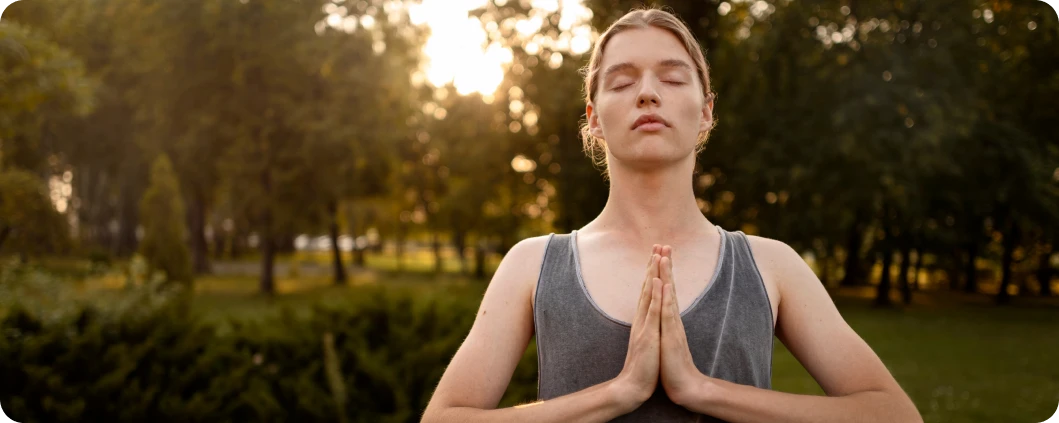
This type aims to help people with ADHD cope with everyday life. Some techniques can help them pay attention for longer periods, while others seek to save energy and avoid overstimulation.
Meditating is highly important for ADHD people, as it allows them to stop the ever-changing flow of thoughts and feelings and remind the brain about the present moment.

This simple yet effective practice involves focusing on your breath, noticing each inhalation and exhalation, and the sensations that come with them. It helps you anchor your mind in the “now,” clear away the flood of thoughts and feelings, and build steady mental focus at any place or time.
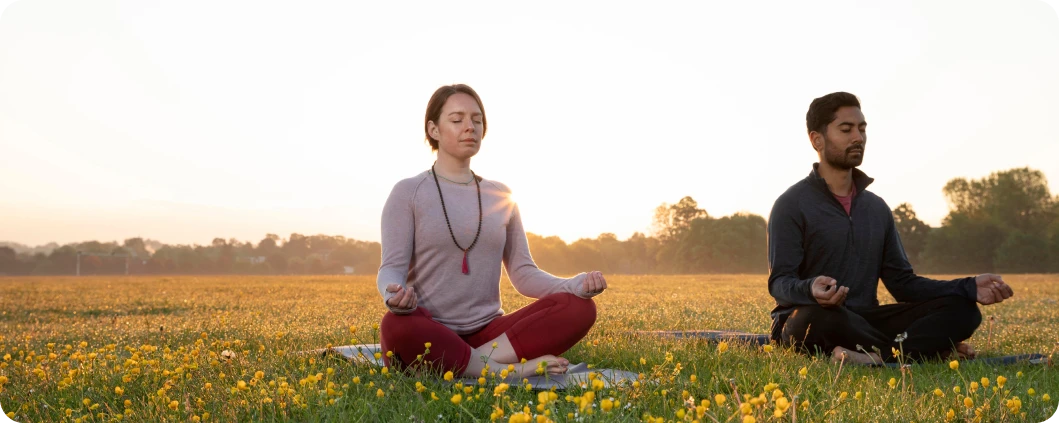
It’s a guided visualization that helps connect with the spirit of a deceased loved one, someone far away, or those with whom you lost contact. Through imagery and memory, it facilitates feelings of closeness, comfort, and emotional healing, providing closure or ongoing connection with the person you still love.

This practice involves consciously acknowledging what you see, hear, smell, taste, and touch, grounding you in the present, and fostering a greater connection with your physical experience in the here and now. This way, you gently remind your brain about the need to stay present, which, in turn, leads to a happier state of mind.

This meditative technique is designed to help you recognize, understand, and healthily deal with emotions. During this practice, you may be guided to reframe your emotional responses and change your perspective toward triggers.
This way, you nurture your emotional intelligence to respond to stimuli with greater calm and clarity.

It’s another powerful technique that can be used anywhere and at any time to anchor yourself in the present and reduce anxiety. The practice requires you to focus on your breath while silently counting each inhale and exhale. This. way, you can reduce mental clutter by providing the brain with structured meditative grounding.

Body Scan Meditation
This technique involves systematically focusing your attention on different parts of your body, usually from head to toe. It helps cultivate awareness of physical sensations, reduce stress, promote relaxation by helping you become more attuned to how your body feels, and more easily detect physical tension and discomfort.

Walking Meditation
Meditating while doing everyday tasks can help you find peace and balance, not in the sterile, trigger-free environment but amidst the hustle of life.
Walking meditation involves paying close attention to the movement of your feet, the sensation of the ground beneath you, and your breath while being fully aware of your surroundings. It’s a way to practice mindfulness while moving, which can be particularly effective for those who have already mastered sitting meditation.

Mantra Meditation
It involves the repetition of a mantra (a word, phrase, or sound) to focus the mind and enter a meditative state. The mantra can be spoken, chanted, or silently repeated. This practice helps in reducing distractions and concentrating on a specific aspect of life you’d like to develop. For example, on some days you may create the mantra “I’m open to every experience life offers me,” and on others, “I’m kind and compassionate.”

Mindful Movement Meditation
Combining elements of mindfulness with physical activity, this practice involves engaging in slow, deliberate movements while paying attention to bodily sensations and breath. It can include practices like yoga or Tai Chi, strengthening both physical and mental well-being via integrating awareness with motion.

Gratitude Meditation
This practice focuses on recognizing and appreciating the positive aspects of life. It typically involves reflecting on things, people, or experiences that you’re thankful for, and they shouldn’t be necessarily positive! By cultivating a sense of gratitude, you can shift your mindset towards a brighter and more comprehensive perspective on life events, even if they were not as pleasant at first.

Grounding Meditation
It focuses on connecting with the present moment and stabilizing your energy when you feel overwhelmed. Techniques may include visualizing roots growing from your feet into the earth, deep breathing, or focusing on all physical sensations such as smell, taste, and touch. This meditation is often used to reduce anxiety and foster an overall sense of stability and safety to restore emotional balance.

Compassion Meditation
This practice helps you develop compassion for yourself and others by imagining and wishing for relief from their suffering. It can cultivate your empathy as you encourage a caring mindset towards everyone. It’s a great way to improve your relationships and overcome feelings of being disliked or unlovable.

Calming Visualization Meditation
Use the power of your mind to create peaceful scenes, like a tranquil beach or a quiet forest. By visualizing these calming scenarios, this practice promotes relaxation and helps counter negative thoughts. It’s especially helpful for those who have trouble sleeping, can’t unwind easily, or feel overwhelmed by stress.

Nature Connection Meditation
It involves practicing mindfulness in a natural setting, focusing on the sights, sounds and smells around you. It’s about immersing yourself in nature to foster a deep sense of peace, presence, and interconnectedness with the natural world. You don’t need to be in nature yourself, but the practice can be based on only visualizing walking in a forest and feeling all the soothing experiences of the living environment.

Somatic Meditation
It focuses on tuning into the body’s current sensations. By paying close attention to your breathing, muscle tension, and bodily feelings, this practice allows you to work out mental problems from top to bottom.
It means that you’ll feel how, for example, a panic attack is manifested in your body, and by exploring these sensations, you’ll be able to handle the attack much more easily.

Open Awareness Meditation
Also known as open monitoring, this type involves maintaining awareness but without focusing on one particular object or sensation. Instead, you observe thoughts, feelings, and emotions as they arise and pass.
This practice cultivates a non-judgmental attitude to your thoughts and a greater understanding of the mind’s activities.

Guided Meditation for ADHD
This type aims to help people with ADHD cope with everyday life. Some techniques can help them pay attention for longer periods, while others seek to save energy and avoid overstimulation.
Meditating is highly important for ADHD people, as it allows them to stop the ever-changing flow of thoughts and feelings and remind the brain about the present moment.

Breath Awareness Meditation
This simple yet effective practice involves focusing on your breath, noticing each inhalation and exhalation, and the sensations that come with them. It helps you anchor your mind in the “now,” clear away the flood of thoughts and feelings, and build steady mental focus at any place or time.

Meeting a Loved One in Spirit
It’s a guided visualization that helps connect with the spirit of a deceased loved one, someone far away, or those with whom you lost contact. Through imagery and memory, it facilitates feelings of closeness, comfort, and emotional healing, providing closure or ongoing connection with the person you still love.

Body Awareness Through the 5 Senses
This practice involves consciously acknowledging what you see, hear, smell, taste, and touch, grounding you in the present, and fostering a greater connection with your physical experience in the here and now. This way, you gently remind your brain about the need to stay present, which, in turn, leads to a happier state of mind.

Meditation for Emotional Regulation
This meditative technique is designed to help you recognize, understand, and healthily deal with emotions. During this practice, you may be guided to reframe your emotional responses and change your perspective toward triggers.
This way, you nurture your emotional intelligence to respond to stimuli with greater calm and clarity.

Counting Meditation
It’s another powerful technique that can be used anywhere and at any time to anchor yourself in the present and reduce anxiety. The practice requires you to focus on your breath while silently counting each inhale and exhale. This. way, you can reduce mental clutter by providing the brain with structured meditative grounding.








